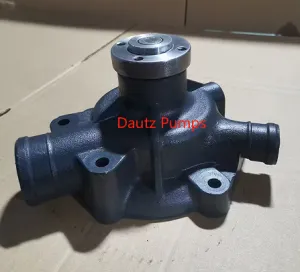Automotive lubricants are divided into mineral lubricants, synthetic lubricants , semi-synthetic lubricants and other categories. Lubricating oil is prepared from hydrocarbons refined from natural gas and crude oil . There is no clear definition of synthetic oil in the world . Generally, lubricating oil containing PAO is called synthetic oil . Usage performance High-grade lubricants are all synthetic lubricants. Synthetic oil has the following advantages (but the price is higher) 1. Hydrogenated base oil removes impurities that affect the quality of lubricating oil and has stable performance. 2. Improve power, reduce noise, and save fuel than conventional lubricating oil. 3. The fluidity of the oil is twice that of traditional lubricating oil, making low-temperature startup faster. 4. Excellent oxidation resistance and thermal stability , suitable for use under high temperatures and harsh conditions. 5. Excellent anti-wear properties and anti-friction agent formula extend the service life of the equipment. 6. Long-term use will remove carbon deposits to ensure engine cleanliness and extend the oil change period. Generally speaking, the mineral base oil is replaced with esters (Easter) or polyolefins (PAO, oly-Alfa-Olefine), and then blended with additives to form a synthetic engine oil . If the base oil is entirely made of esters or polyolefins, If olefins are substituted, it is called fully synthetic oil (Fully-Synthetic Oil). If only part of it is used, it is called semi-synthetic oil (Partial-Synthetic Oil). Raw material composition Most of the products on the market labeled as synthetic oil contain less than 12% PAO. Fully synthetic motor oil is formulated with 100% PAO (PolyAlpha Olefin) as base oil and additives. The world’s α_olefin producers are mainly concentrated in developed countries and regions such as the United States, Europe, South Africa and Japan. In 2000, the total production capacity reached 2557kt/a, and the planned and under construction unit capacity was 512kt/a. Among them, 1_hexene accounts for 20.4% of the total α-olefins. It is estimated that by 2005, the annual growth rate of 1_hexene production capacity will reach 6.78%, and the annual growth rate of demand will be about 10%. Previously, the world 1-hexene market had tight supply, short supply, and rising prices. According to the development forecast of China’s PE product market demand, China’s annual demand for 1-hexene and 1-octene as comonomers will reach 30-50 kt. . High-carbon α-olefins such as 1-decene are raw materials for high-grade lubricating oil base oils . The medium and low-grade lubricating oils and most high-grade lubricants produced by cracking products of my country’s wax-based oil (characteristics of my country’s crude oil: high wax content) are being eliminated. In recent years, our country has to import 300~500 kt of high-grade lubricating oil base oil from abroad at high prices every year (that is to say, the raw material base oil of domestic synthetic engine oil on the market is imported) to develop and produce high-carbon α- Advanced lubricant base oils based on olefins are the development goals of Chinese petrochemical companies. Excellent characteristics The extremely stable molecular structure of fully synthetic engine oil gives the oil super oxidation stability;Extraordinary anti-wear performance, effectively extending the service life of the engine;The base oil component is synthesized through high-tech means. Even if the vehicle is parked for a long time, the lubricating oil film formed under the action of the synthetic oil will adhere closely to the surface of the metal parts, making it easy to start and greatly reducing even under heavy load. wear and tear. Ensure extremely low volatilization loss of engine oil in high-temperature environments within the engine;The unique friction reducer ensures excellent lubrication performance of the oil. The low volatility and thermal stability of the synthetic base oil can significantly reduce fuel consumption;All-weather oil, can be used at ambient temperatures from -30℃ to 50℃。 Unique formula with low phosphorus content to protect the three-way catalytic converter;It does not thicken at extremely low temperatures, is more heat-resistant than natural oil, and synthetic oil has longer oil change intervals than mineral oilSynthetic oil can still maintain viscosity and lubrication even after long-term driving. Coupled with its unique anti-wear properties, it extends the service life of all moving parts and greatly reduces the need for engine maintenance and overhaul.Laboratory and road tests have shown that this fully synthetic motor oil has an ideal combination of viscosity, lubrication, volatility and cleanliness properties to maximize engine protection and minimize friction and fuel consumption.Semi- synthetic lubricants /mineral lubricants are basically suitable for general public users. Misunderstandings in use Misunderstanding 1: Add as much lubricant as you can The amount of lubricating oil should be controlled between the upper and lower scale lines of the oil dipstick. Because too much lubricating oil will escape from the gap between the cylinder and the piston into the combustion chamber and form carbon deposits . These carbon deposits will increase the engine compression ratio and increase the tendency of knocking; the carbon deposits in the red-hot state in the cylinder can easily cause pre-ignition. If they fall into the cylinder, they will increase the wear of the cylinder and piston, and also accelerate the contamination of the lubricating oil. Secondly, too much lubricating oil increases the stirring resistance of the crankshaft connecting rod and increases fuel consumption. Misunderstanding 2: When the lubricating oil turns black, it is time to change the oil This understanding is not comprehensive. For lubricants without detergents and dispersants, the blackening of the color is indeed a sign that the oil has seriously deteriorated. However, lubricants used in modern cars generally contain detergents and dispersants. This kind of detergent washes off the film and black carbon deposits adhering to the piston and disperses it in the oil to reduce the formation of high-temperature sediments in the engine. Therefore, the color of the lubricating oil will easily turn black after being used for a period of time, but at this time The oil has not completely deteriorated. Misunderstanding 3: Lubricating oil is often replenished and does not need to be changed It is correct to check the lubricating oil frequently, but only replenishing it without replacing it can only make up for the lack of oil quantity, but it cannot fully compensate for the loss of lubricating oil performance. During the use of lubricating oil, the quality will gradually decrease due to pollution, oxidation and other reasons, and there will also be some consumption, reducing the quantity. Myth 4: Additives are useful Really high-quality lubricating oil is a finished product with multiple engine protection functions. The formula contains a variety of additives, including anti-wear agents. Lubricating oil is most particular about the balance of the formula to ensure the full play of various properties. Adding other additives on your own will not only fail to bring additional protection to the vehicle, but will easily react with the chemicals in the engine oil, causing a decline in the overall performance of the engine oil.











